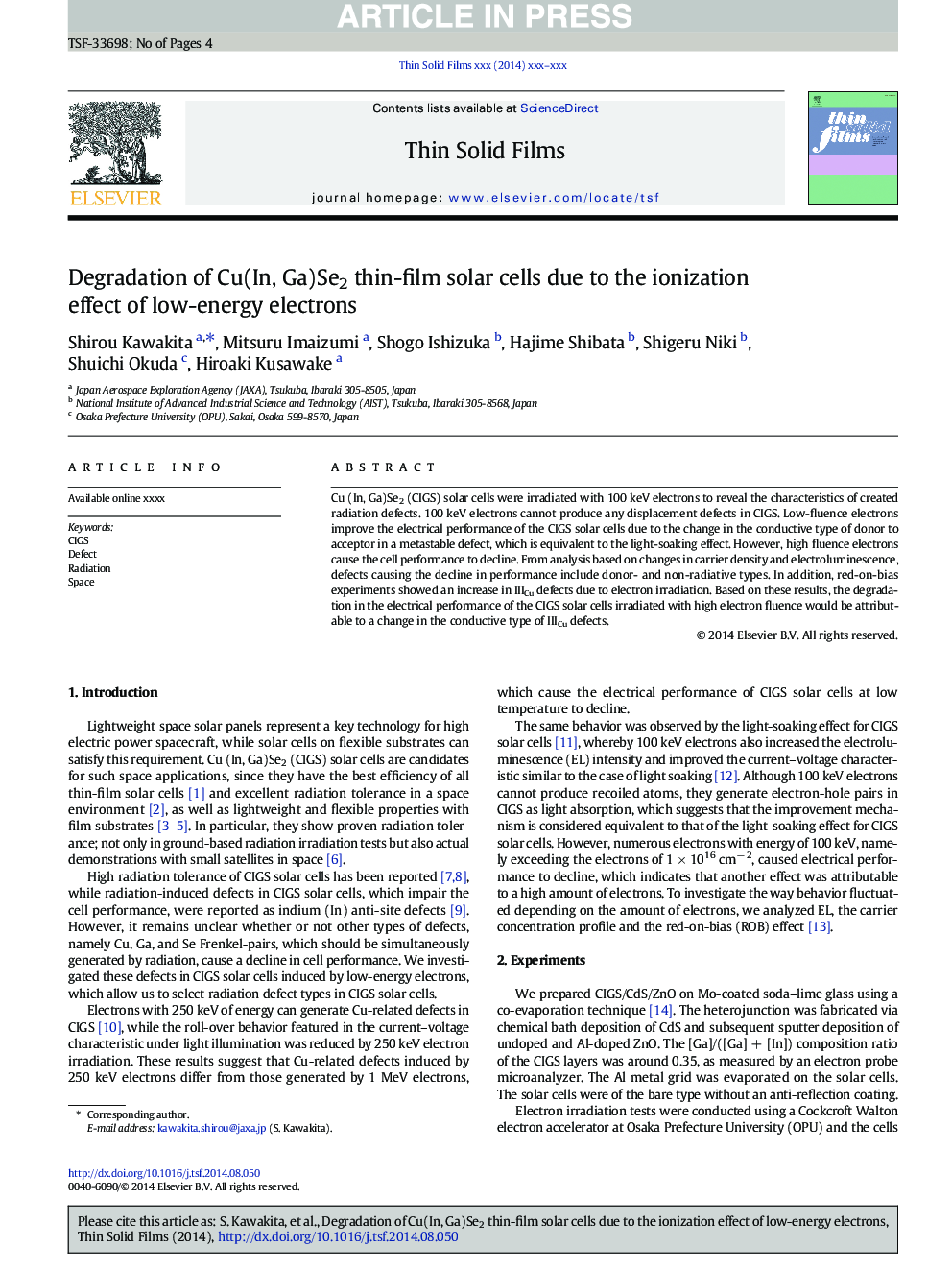| Article ID | Journal | Published Year | Pages | File Type |
|---|---|---|---|---|
| 8034224 | Thin Solid Films | 2015 | 4 Pages |
Abstract
Cu (In, Ga)Se2 (CIGS) solar cells were irradiated with 100Â keV electrons to reveal the characteristics of created radiation defects. 100Â keV electrons cannot produce any displacement defects in CIGS. Low-fluence electrons improve the electrical performance of the CIGS solar cells due to the change in the conductive type of donor to acceptor in a metastable defect, which is equivalent to the light-soaking effect. However, high fluence electrons cause the cell performance to decline. From analysis based on changes in carrier density and electroluminescence, defects causing the decline in performance include donor- and non-radiative types. In addition, red-on-bias experiments showed an increase in IIICu defects due to electron irradiation. Based on these results, the degradation in the electrical performance of the CIGS solar cells irradiated with high electron fluence would be attributable to a change in the conductive type of IIICu defects.
Related Topics
Physical Sciences and Engineering
Materials Science
Nanotechnology
Authors
Shirou Kawakita, Mitsuru Imaizumi, Shogo Ishizuka, Hajime Shibata, Shigeru Niki, Shuichi Okuda, Hiroaki Kusawake,
